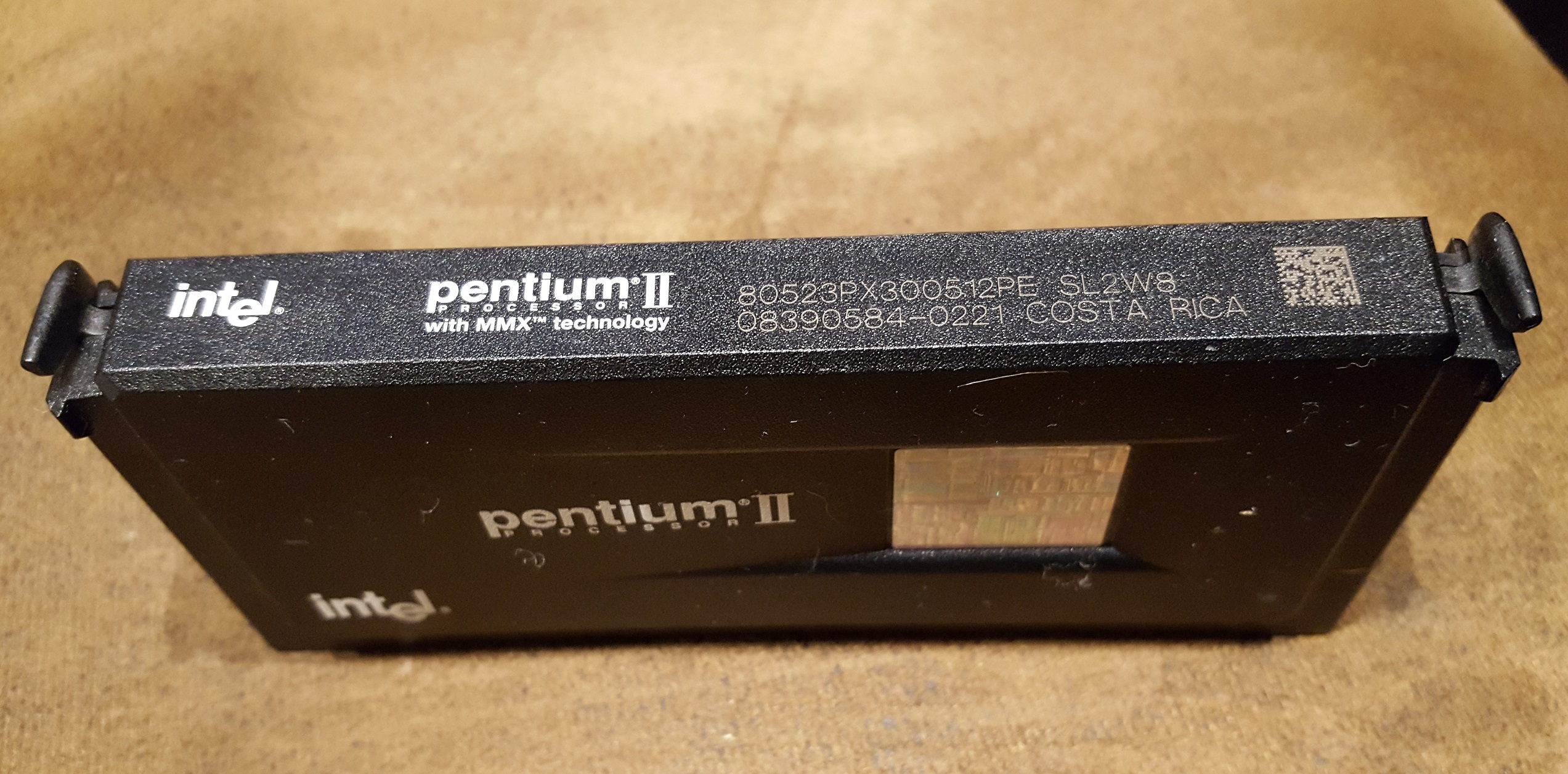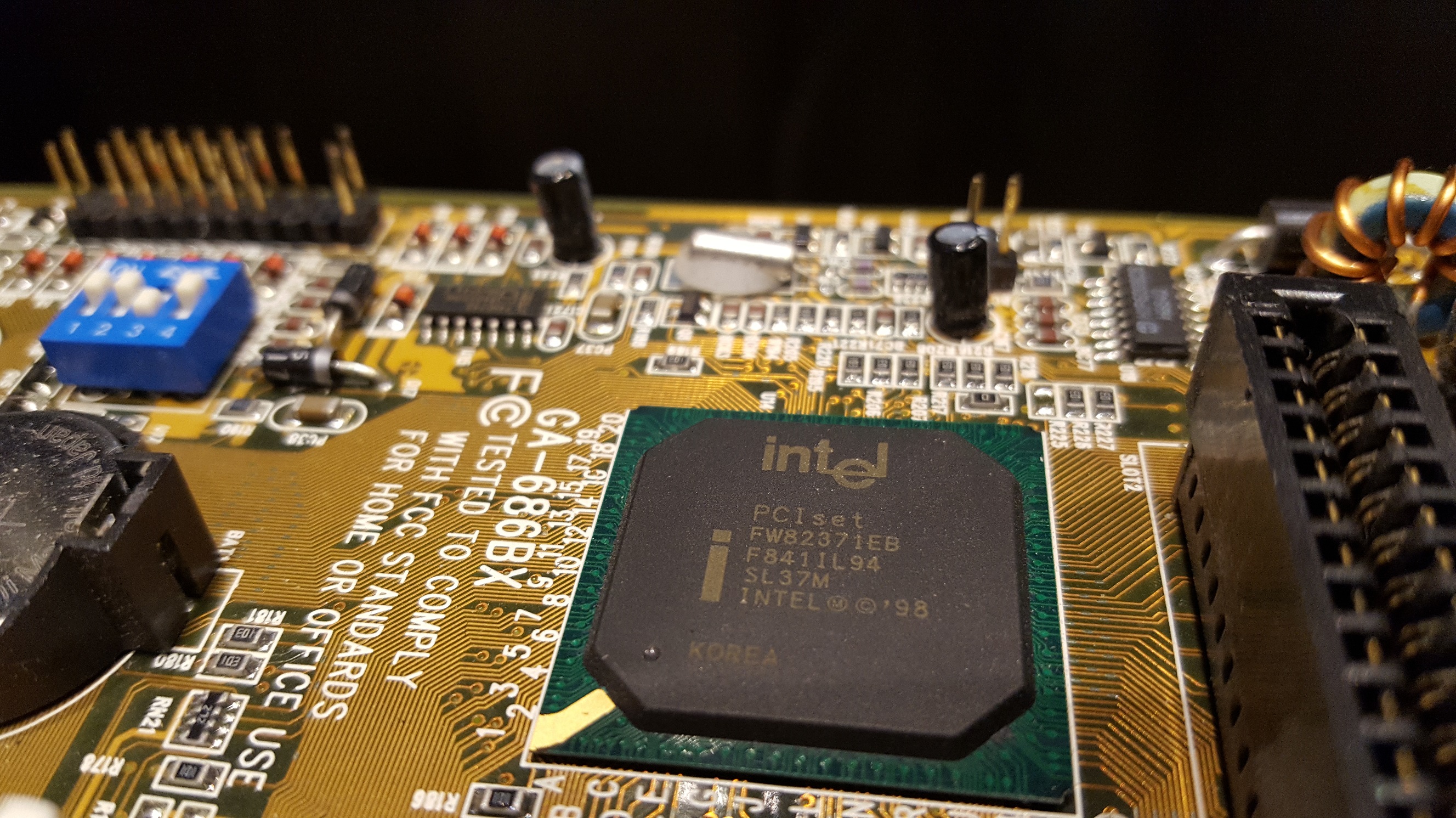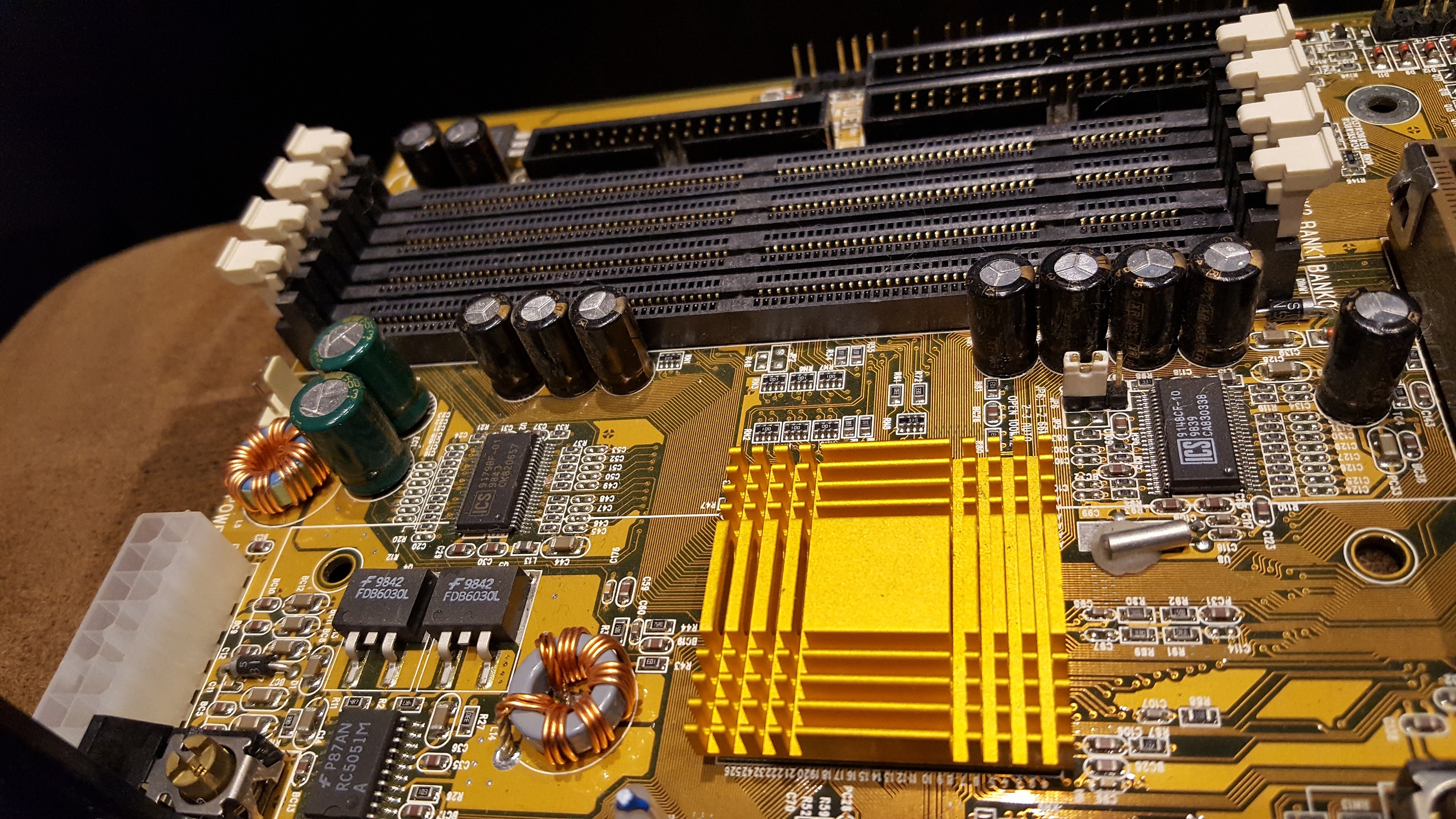In-Depth Review: Gigabyte GA-686BX Motherboard - Part 1
This month I picked up this nice Slot 1 ATX motherboard from Gigabyte. First introduced in 1998, the GA-686BX came on the market at a turning point in PC history in more more ways than one. Intel had ditched Socket 7 with its limiting 66 MHz front side bus, and had moved to their new Slot 1 format for its latest CPU - the Pentium II. Meanwhile, the 3D graphics war was still in full swing with five major companies vying for a piece of the 3D graphics hardware market.
Here I do some bench testing of this motherboard with a variety of other hardware to put it through its paces.
Basic Specifications
The GA-686BX motherboard can be summarized as follows:
- Slot 1 CPU support for Intel Pentium II, III and Celeron processors
- 100 MHz Front Side Bus
- Intel 440BX chipset
- Three ISA slots, four PCI slots, and an AGP 2x slot
- Up to 1 GB SDRAM memory
- UDMA/33 interface
- Two USB ports
This particular board appears to be revision 2.2. I'm not sure what impact the different revisions had, only that before this there was a revision 1.0 and 2.0.
The Component Parts
The CPU and Caches
 The Slot 1 interface was Intel's answer to eliminate the bottleneck between the CPU and L2 cache operating via a 66 MHz front-side bus. By putting the CPU and L2 cache side-by-side on its own 'card' it could communicate much faster between the two instead of relying on the slow motherboard bus.
The Slot 1 interface was Intel's answer to eliminate the bottleneck between the CPU and L2 cache operating via a 66 MHz front-side bus. By putting the CPU and L2 cache side-by-side on its own 'card' it could communicate much faster between the two instead of relying on the slow motherboard bus.
Unfortunately, the L2 cache on a Pentium II Slot 1 card always runs at half the CPU speed, regardless of the motherboard's Front Side Bus speed.
This motherboard is pretty flexible in that it supports Intel processors from the first Pentium II "Klamath" CPUs that arrived in 1997 and ran from 233 MHz up to 633 MHz, up through the Pentium III era, and even the first Celerons (codenamed "Mendocino"). The board also has an abundance of protective circuitry, including an audible warning if the CPU is overheating (in which case it reduces the CPU speed), or if the CPU fan fails.
For my initial round of testing, I will use a Pentium II 300 (sSpec = SL2W8). This is part of the second iteration of PII processors with the "Deschutes" core which used the new 0.25 micron process, making the die size smaller. Incidentally, the PII-300 as shown above was renowned for being an overclockers dream, with up to 450 MHz stable in many cases.
The Chipset
 The Intel 440BX "Seattle" is a decent chipset that was almost brand new when this motherboard was produced (April 1998). It was the first to officially support a front side bus of 100 MHz - a significant update to everything that came before. For those who couldn't afford the expensive Intel Pentium II/Slot 1 combo, third-party motherboard and chipset manufacturers scrambled to get a 100 MHz FSB out the door. The first rival to market was VIA with their Apollo MVP3 chipset, introduced also in 1998. FIC's VA-503+ was the first non-Intel board to support this chipset, so it would be interesting to compare this plus an AMD K6-2 to the board in this article and equivalent Pentium II.
The Intel 440BX "Seattle" is a decent chipset that was almost brand new when this motherboard was produced (April 1998). It was the first to officially support a front side bus of 100 MHz - a significant update to everything that came before. For those who couldn't afford the expensive Intel Pentium II/Slot 1 combo, third-party motherboard and chipset manufacturers scrambled to get a 100 MHz FSB out the door. The first rival to market was VIA with their Apollo MVP3 chipset, introduced also in 1998. FIC's VA-503+ was the first non-Intel board to support this chipset, so it would be interesting to compare this plus an AMD K6-2 to the board in this article and equivalent Pentium II.
Anyway, back to the 440BX. It was virtually identical to the 440LX "Balboa" chipset apart from the faster FSB support. It included SDRAM support, though retained backward compatibility with EDO RAM, and also kept the same AGP performance, supporting graphics cards that were AGP 1x (66 MHz) or AGP 2x (133 MHz, 533 MB/s). The 440BX was successful for Intel, and liked by consumers for its overall system stability.
MEMORY
 Given the fast 100 MHz bus speed means older RAM types (FPM and EDO) are out. These were barely able to cope at 66 MHz, so could be a serious bottleneck when put into a board like this. Fortunately, the board doesn't even support these. Instead it has four 168-pin DIMM slots that are designed for the new SDRAM type - specifically PC-100 SDRAM (meaning it can run at 100 MHz). The board supports both PC-66 (66 MHz) and PC-100 SDRAM modules from 8 MB up to 256 MB. The motherboard's manual tells me PC-66 is only supported when running the FSB at 66 MHz, which makes perfect sense. I have chosen these DIMM modules for testing with this board:
Given the fast 100 MHz bus speed means older RAM types (FPM and EDO) are out. These were barely able to cope at 66 MHz, so could be a serious bottleneck when put into a board like this. Fortunately, the board doesn't even support these. Instead it has four 168-pin DIMM slots that are designed for the new SDRAM type - specifically PC-100 SDRAM (meaning it can run at 100 MHz). The board supports both PC-66 (66 MHz) and PC-100 SDRAM modules from 8 MB up to 256 MB. The motherboard's manual tells me PC-66 is only supported when running the FSB at 66 MHz, which makes perfect sense. I have chosen these DIMM modules for testing with this board:

Fujitsu 8111722E-100FN (32 MB , PC-66 CL2 SDRAM)
I don't know if these memory sticks have SPD (Serial Presence Detect) - if they do this means they hold information about the most optimal settings for RAS, CAS, etc.
DRIVES
This motherboard supports ATA-4 for its access to hard disk drives. ATA-4 came out as a new standard in 1997 to replace the ATA-3 standard. ATA-4 is often referred to by its fastest data throughput, such as Ultra DMA/33 or ATA/33, which is so-called because it can transfer up to 33 MB of data per second.
DIP SWITCHES
The front-side bus can be switched between 3 modes: 66 MHz, 100 MHz, or Auto-Detect. This can be done via the jumper at JP6 and the four DIP switches.
Other test hardware
I will be testing as many of my AGP 1x and 2x cards on this motherboard as I can, as well as some PCI cards. The one rule I will follow is that they must be period-correct, so this motherboard pre-dates nVidia's Riva TNT2, and S3's Savage 4. I will run some of the benchmark tests with and without a 3dfx Voodoo card.
This leaves my list of test cards as follows:
AGP 1x
- Pine PT-5968 (SiS 6326A chipset, 8MB) (1998)
AGP 2x
- ATi Rage Pro Turbo (1998)
- Diamond Viper V550 SDR 16 MB (Riva TNT chipset) (1998)
- Matrox Millennium G200 8MB (1998)
- STB Velocity 128 (Riva 128 chipset, 8MB) (1997)
PCI
- S3 Trio 64V+ 1MB PCI (1995)
- Number Nine GXE64 Pro PCI (S3 Vision964 chipset, 2MB) (1996)
- Diamond Stealth Video 2500 PCI (1996)
- ATi 3D Charger Rage II+DVD 2MB (1997)
- S3 ViRGE/DX 4 MB (1997)
- ATi Rage Pro (1997)
Watch this space for more to follow in Part 2!
